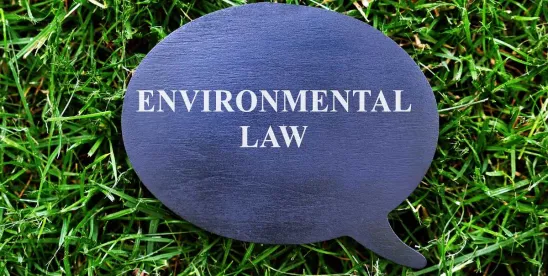On May 23, 2024, the Supreme Court of Illinois rendered a judgment in Rice v. Marathon Petroleum Corp., which involved important considerations for both environmental law and personal injury claims. This case was initiated by Laura E. Rice, acting as the special representative for the estate of her late mother, Margaret L. Rice. The litigation focused on the complex relationship between statutory environmental protections provided under the Illinois Environmental Protection Act (“Act”) and the applicability of common-law negligence remedies for personal injuries.
The decision establishes a clear precedent in Illinois law, defining the boundaries of private rights of action under environmental statutes. The ruling distinguishes the purposes of environmental statutes from common-law remedies, explaining how individuals can seek redress for personal injuries from environmental violations. The decision also underscores robust governmental enforcement mechanisms, affirming the role of state agencies in managing environmental compliance and protecting public health. Lastly, the ruling may influence other jurisdictions facing similar legal questions about the scope of environmental statutes and the role of private litigation in enforcement.
Background
The case stemmed from a tragic incident in 2017, when an explosion at Margaret Rice’s condominium complex severely injured her and caused extensive property damage. The explosion was triggered by gasoline vapors that had leaked from an underground storage tank at a Speedway gas station over a mile away. The tank, owned and operated by Marathon Petroleum Corporation, had been leaking for some time, leading to the buildup of dangerous vapors in the sewer systems connected to Margaret’s home.
At first, Laura Rice’s lawsuit included claims of strict liability and negligence. The strict liability claims were based on alleged violations of the Act. However, the Cook County Circuit Court dismissed the statutory claims, a decision the appellate court upheld. The Supreme Court of Illinois affirmed these dismissals, providing a detailed rationale with significant legal implications.
No Express Right of Action
The Supreme Court’s ruling underscores that the Act does not provide an express or implied private right of action for personal injuries caused by environmental violations. The court emphasized that the Act primarily aims to protect the environment rather than serve as a vehicle for personal injury claims. If the legislature had intended to create such a right, it would have done so explicitly, the court said. This interpretation clarifies that individuals cannot sue for damages under the Act for personal injuries, directing them instead to pursue common-law negligence claims.
In its analysis, the court applied the four-factor test established in Fisher v. Lexington Health Care, Inc., 188 Ill. 2d 455, 722 N.E.2d 1115 (Ill. 1999), to determine whether a private right of action could be implied under the Act. The court considered whether the plaintiff was a member of the class for whose benefit the statute was enacted, noting that the Act was mainly designed to protect the environment rather than provide personal injury remedies. It assessed whether the plaintiff’s injury was one that the statute was designed to prevent, emphasizing that the statute’s primary aim was environmental protection, not individual injury prevention. The court evaluated a private right of action’s consistency with the underlying purpose of the statute, concluding that such an action would not align with the Act’s primary goal of environmental protection. Finally, it examined whether a private right of action was necessary to provide an adequate remedy, determining that common-law negligence actions were sufficient, rendering the right of a private right of action unnecessary. The court ultimately found that the Act’s statutory framework and regulatory enforcement mechanisms under the Act addressed environmental violations and not claims for personal injury.
Common-Law Negligence
The court affirmed that common-law negligence actions provide an adequate remedy for personal injuries resulting from environmental violations. By allowing statutory violations to serve as prima facie evidence of negligence, the court affirmed that plaintiffs like Laura Rice could still seek compensation through traditional legal avenues. This decision maintains the balance between enforcing environmental regulations and providing avenues for personal injury redress without overburdening the statutory framework designed for environmental protection.
Governmental Enforcement Emphasis
The ruling reinforces the role of governmental agencies in enforcing environmental laws. The court noted that the Act’s framework, which includes substantial penalties and enforcement mechanisms by state and local authorities, is enough to address and remediate environmental hazards. This emphasis on governmental enforcement over private litigation aligns with the broader public policy goal of maintaining environmental protections and accountability through established regulatory channels.
GT INSIGHTS
The ruling in Rice v. Marathon Petroleum Corp. underscores a crucial principle in environmental law: environmental regulations are mainly designed to safeguard the environment, not to allow personal injury redress. By clarifying that the Illinois Environmental Protection Act does not provide a private right of action for personal injuries, the court emphasized that the environment is the key beneficiary of the Act. This decision reinforces the role of common-law negligence claims as the appropriate remedy for personal injuries arising from environmental violations, thereby maintaining a clear distinction between environmental protection goals and personal injury claims. The ruling also highlights the importance of robust governmental enforcement mechanisms, affirming that state agencies are adequately equipped to manage environmental compliance and address violations. Under this approach, environmental statutes remain focused on their primary objective of environmental protection while providing clear guidance for legal practitioners and policymakers.



 />i
/>i

